TRAINERS, breeders and horse owners from all over the country travelled to The Heritage Hotel in Killenard, Co Laois, on Monday evening to learn more about the potential for installing solar panels on the roofs of their stables.
The information evening was entitled ‘Maximising Energy Grants for the Equine Sector’ and it was organised by The Irish Field with the support of the Irish Farmers Association (IFA) and Bord Gáis Energy.
Over the course of two hours guests heard from panellists Peter Clarke (IFA Bord Gáis), Barry Caslin (Teagasc), Stephen Robb (Irish Farmers Journal) and Ciara Leahy (Irish Country Living).
Local trainer Kieran Cotter also answered questions about his own recent installation of solar panels which he says has virtually wiped out his electricity bills while also powering the family’s electric car.
Among the audience members putting questions to the speakers were John and Caitriona Oxx, Henrietta Egan of Corduff Stud and Victor Quinlan of Horse Racing Ireland, while listening intently were trainers Gavin Cromwell, Arthur Moore and Ado McGuinness, Cathal Byrnes from Co Limerick, Co Cork breeder and vendor Frank Motherway, and Joe Osborne from Godolphin Ireland.
Former IHRB chairman Martin O’Donnell, Lt Col Tom Freyne of the Army Equitation School, former Horse Sport Ireland chairman Joe Reynolds, show jumper Comdt Geoff Curran, Hayley O’Connor of Eyrefield Lodge Stud, Jockeys Association chief Andrew Coonan and broadcaster Kevin O’Ryan were other faces spotted in the crowd.
Peter Clarke heads the IFA Bord Gáis solar energy proposition and told those present that the business was created just two years ago with the aim of helping farmers to participate in the easiest form of renewable energy.
Pilot installations were made at around 10 farms all over the country and soon it became very clear that it was proving popular and successful.
An increase in the Government grants available for solar panel installation made it even more viable, plus the fact that planning permission was no longer required, and that users could now sell back excess electricity to the national grid.
When the Department of Agriculture’s Targeted Agricultural Modernisation Scheme (TAMS) was extended to the equine sector, trainer Kieran Cotter made contact with IFA Bord Gáis and Clarke took the crowd through that case.
“It’s not rocket science,” Clarke said. “The first thing is to think ‘how big is my spend?’ We make clear to farmers that this is not a way of making money. That’s the reality. TAMS is set up in a way that it’s all about the power that you use on the farm. You can’t build a system that’s any bigger than the power that you generated that you used in the previous 12 months. So ‘own use’ is key here.”
Clarke said his company, once contacted by a potential client, will visit the property and see where the solar panels can be fitted for maximum impact. Although IFA Bord Gáis can assist clients with the paperwork in applying for TAMS and dealing with ESB Networks, Clarke emphasised the importance of having a “trusted advisor”.
He explained: “TAMS is a three-month cycle. Getting approval for your TAMS grant and from ESB it is probably a four-month process. After that we schedule your install and then you have an app on your phone that shows you the power that’s been generated and how much you’re saving.”
Cotter case
Kieran Cotter’s installation of 21 panels cost a total of €24,000 which the trainer had to initially finance himself before getting €12,000 back through TAMS. The system is generating approximately 80% of the power that the farm uses and he is saving “in the region of €2,200” per year. The system has a lifespan of at least 25 years.
In January this year Cotter bought an electric-powered Volvo which is also being charged overnight at home at effectively no cost.
Clarke added: “From an environmental perspective as well, it’s very, very important this installation will reduce carbon emissions by about three tonnes per year, which is the equivalent of about 79,000 car kilometres avoided over the lifetime of the installation. It’s the same as planting over 500 trees.
“The point here is, it makes economic sense, it makes financial sense, but it also makes sense from an environmental perspective, and puts farmers on the right side of that equation.”
Barry Caslin is a highly respected advisor from Teagasc, the State agency that provides research, advisory and education in agriculture and rural development. He gave listeners some facts on Ireland’s solar energy targets and explained what the Government was doing to incentivise people to switch to renewable energy.
“Ireland has a big solar target of eight gigawatts by 2030. At the moment we have 700 megawatts of commercial, industrial solar farms and we have 300 megawatts of rooftop solar installed, so it’s moving along very quickly, especially the rooftop solar.”
Ordinary households who want to get solar panels fitted can apply for Sustainable Energy Authority Ireland (SEAI) grants of between 20-30% but farmers – including those in the equine sector – can get up to 60% in grants through TAMS.
Caslin explained the different types of panels on the market, their size, components and longevity. Solar panels only need brightness or daylight to generate power, not necessarily bright sunlight, though they are a bit more effective in the south-east than the north-west of the country.
Roof conditions
“Roof conditions are important as well,” he said. “They’re not particularly heavy panels but the roof must be safe. I have seen situations where people have been advised to put panels on certain roofs which would be very questionable. I think you know yourself what roofs are good and structurally sound.”
Typically a solar panel system will be generating most of its power in the middle of the day when the sun in shining but there is not a strong demand for electricity, so a battery is needed.
While exporting or selling excess power back to the ESB is possible, this is limited in many parts of the country due to limitations on the ESB transformers. It was generally agreed by several speakers on the night that you are better off using the power generated yourself through battery storage.
“A five kilowatt system will give you over 4,000 kilowatt hours of electricity per year,” he said. “Now, just to put that in perspective, the average house, domestic house, would use somewhere between 5,000-6,000 kilowatt hours of electricity per year.
“But your system is not generating electricity on those cold winter evenings when you have that higher demand for electricity.”
Battery storage is also covered under TAMS with a 60% grant and they typically have up to 10,000 charge cycles before they have to be replaced.
Going into more detail on TAMS, Caslin explained that every eligible ‘farmer’ can apply for up to €90,000 under the TAMS solar capital investment scheme, though very few applications reach the maximum figure.
He clarified that applications for solar grants did not affect any other TAMS applications.
“Previously if a dairy farmer had already availed of capital investment schemes and had used up their €90,000 in TAMS funding they couldn’t apply again but the solar investment scheme is a separate pot of money.”
Under TAMS, the solar panels installed on a farm can also power one house on the premises but not a second dwelling.
“Some people ask the question ‘if your business got bigger and, maybe in two or three years’ time, could you apply again and tap into that €90,000 that you hadn’t fully availed of? Yes, that is something that you can do. If you can show that your bills have gone up over time, you can get a bigger system.”
Wrapping up, Caslin said: “We’re only touching on solar here tonight, but there’s a lot of other renewable technologies that will be hopefully available to farmers, maybe even at larger scales in the near future.
“Electricity prices have continuously fluctuated in recent years, and we expect more increases in electricity prices as there’ll be a lot more demand for electricity in the future. We heat our homes mainly from electricity. We’ll be charging our cars using a lot more electricity.
“So we are seeing an increased shift on farms to the use and supply of renewable energy. And there is an opportunity here for farmers to be part of this new energy transition.”
EARLIER this year the Irish Farmers Journal staged a series of ‘Renewable Roadshows’ around the country which focused on solar energy opportunities for farmers.
The Journal’s Renewables Editor Stephen Robb spoke at all of those events and he catalogued the frequently asked questions on the topic by farmers who attended.
Robb brought that knowledge and experience to Monday night’s event where he gave an informative and engaging presentation. Here are some of the questions he both posed and answered.
Q: Where do I start with my TAMS application?
Most people start by chatting to the solar panel installers, to get an idea of what kind of a what size of a solar PV system works for them, and what will work on their farm. Get an idea of cost. There is quite a bit of work to TAMS and there are a number of suppliers, such as IFA Bord Gáis, who do the whole job for you, and that’s proven quite popular.
Q: Can I make more than one TAMS solar application?
Yes, you can. There is a ceiling of €90,000 worth of grants which you can avail of but, by and large, most farmers aren’t really going to do that. It might be applicable if you have a couple of yards or if you have maybe two meters.
But if you do go for two TAMS applications, you need two entirely separate systems, so you can’t actually link them into each other, which is a bit of a nuisance, but that’s unfortunately the rules.
Q: Can I make a TAMS application for just the farmhouse with no farm at all?
No. If the house is standalone and nothing to do with the farm then it’s not really a farm so you can’t technically apply for a TAMS application.
Most farmhouses are on the same meter as the farm.
Q: If I have two meters, can I use the energy generated from solar panels from one meter to offset the energy cost from another meter?
This gets asked quite a bit. Basically, in this situation, they might have two yards and two separate meters. They want to install a bigger solar PV system on one yard and use it to offset the electricity costs of the other one. Is that possible? No, it’s not.
Q: Can I oversize my panels to factor in future demand?
This is actually a really common question as well. Your TAMS application will be based on your electricity bills for the past 12 months but maybe you anticipate higher demand for electricity in the future, so can you apply for more panels than you need at the moment?
Well, no, not really. Now, I have heard of some applications bumping it up a little, but it’s only by a kilowatt or two. It’s not massive, and I haven’t heard anyone getting caught yet either, but that’s neither here nor there.
Q: Will there be TAMS funding for solar installations post-2027?
The Rural Development Programme spans from 2023 to 2027. We asked the Department if we are guaranteed more TAMS funding in the next round of the Common Agricultural Policy. They couldn’t give us an answer but I find it very, very hard to believe that there won’t be another round of funding for solar PV systems, considering the scale of the challenge that we have ahead of us.
Q: How do you paint sheds with solar panels on them?
You can’t say that we don’t ask the hard questions here! Basically, the solar panels are physically mounted onto your roof. Once they’re on, they’re not designed to come off. So in other words, paint your shed beforehand!
Q: What is the lifetime of the battery which will store my excess electricity?
The lifespan of a battery is contingent upon the technology and its usage patterns with the number of cycles. So a cycle is a complete charge and discharge.
A battery might have a life expectancy of 10 years or 10,000 cycles, whichever is sooner. But with lithium batteries, I think a 10-year lifespan is expected.
Q: Do I have to clean my solar panels?
No, not really. You won’t have to clean them unless you’re in a really dusty yard, like a feed mill, or maybe if you’re beside a coastal location. Giving them a power wash probably would help but it’s not really an issue.
Q: Does it pay to put solar panels on my roof as a commercial export project?
This is a really common question. Farmers have all this roof space. They want to know can they line up with solar panels and export it all to the grid and get an income off it?
Well, there is actually a grant that’s about to come out called the Small Scale Renewable Electricity Support Scheme (SSRESS).
It will provide a payment for you for up to 15 years to export electricity to the grid from a rooftop solar PV system. Unfortunately, the tariff rates came out recently and they were disappointing, about 13 cent.
By my figures, if you installed a 100kw system, it would cost you around €85,000. It could be another €80,000 for the grid connection – that’s the great unknown. So you’re chatting €160,000 of an outlay, and what will that produce.
It’ll produce around 87,000 kilowatt hours of electricity per year, at 13 cent per kilowatt hour. That’s an annual revenue of €11,388 per year. So it will take you almost 15 years to get the money back.
Now that’s not the best way of working this out. I literally just divided revenue by the cost.
I’m sure there’s much smarter accounting ways of doing this, but in its most simplistic form, you can see that it’s a long payback period to do something like this, but that system will operate for 40 years. So you’ll make 11 grand a year after 15 years, give or take.
INSTALLING solar panels on my stables was in the back of my head for a while because, like everybody here, my energy costs and electricity bills were just going up month on month.
It was only in 2023 when TAMS was extended to the equine sector that I got in touch with IFA Bord Gáis. They came out within two days and that was nearly the last involvement I had with the whole thing.
Anyone who works with horses is just too busy, and you get bamboozled with grant applications and finance. Basically I just handed the whole lot over and they took care of it from there on.
The only thing we had to do was to be a bit patient because these things don’t happen overnight. The TAMS grant took three or four months for approval.
When I got the go-ahead, it was all done in one day.
I have a 21-panel system, which is at the lower end but that’s the max we can have because that’s the max the system can take.
You have the app on your phone to see what you’re generating daily. Most days we’re on 80-90% production rate.
I suppose we’d be typical of most people in the horse industry. You start in the morning at half seven, and your horsewalker is going until 1pm in the day, and maybe after dinner.
But we can’t use all the electricity we produce during the summer months, so we bought an all-electric Volvo as well. You can always charge a car rather than export your electricity at half the price they are charging you for it.
We were spending €400-€500 a month on diesel for the car and that’s gone as well. The car payments are less than we were spending on diesel.
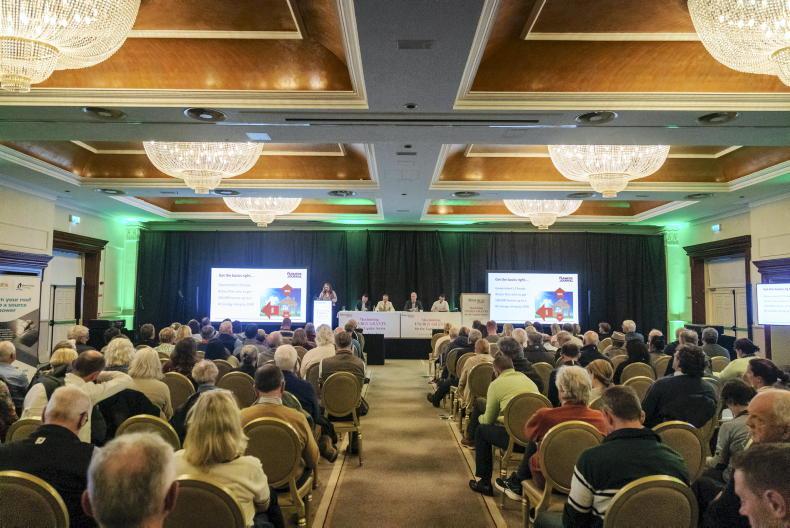



 This is a subscriber-only article
This is a subscriber-only article
 It looks like you're browsing in private mode
It looks like you're browsing in private mode




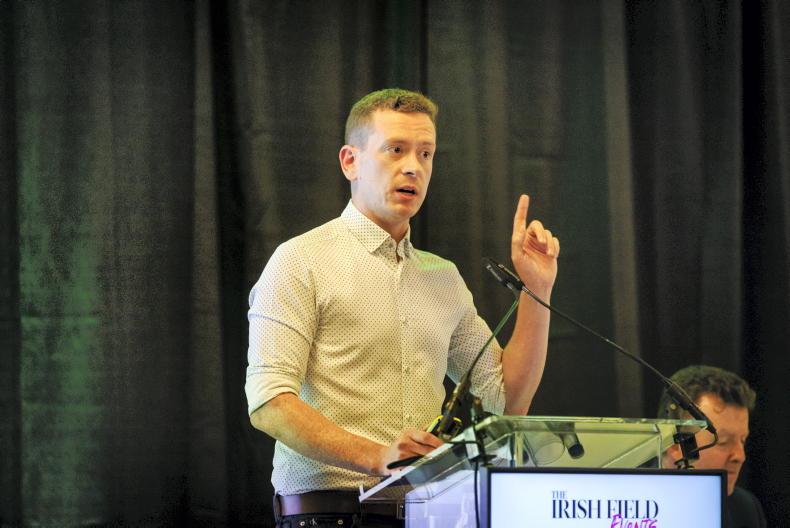
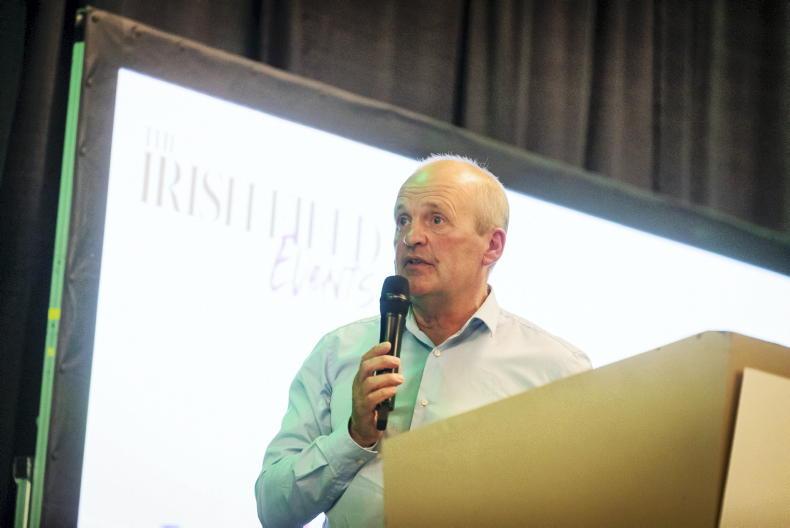
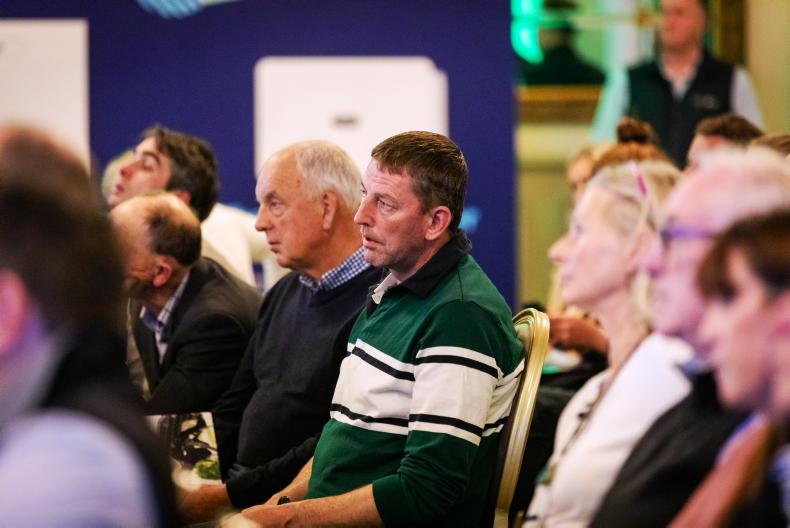


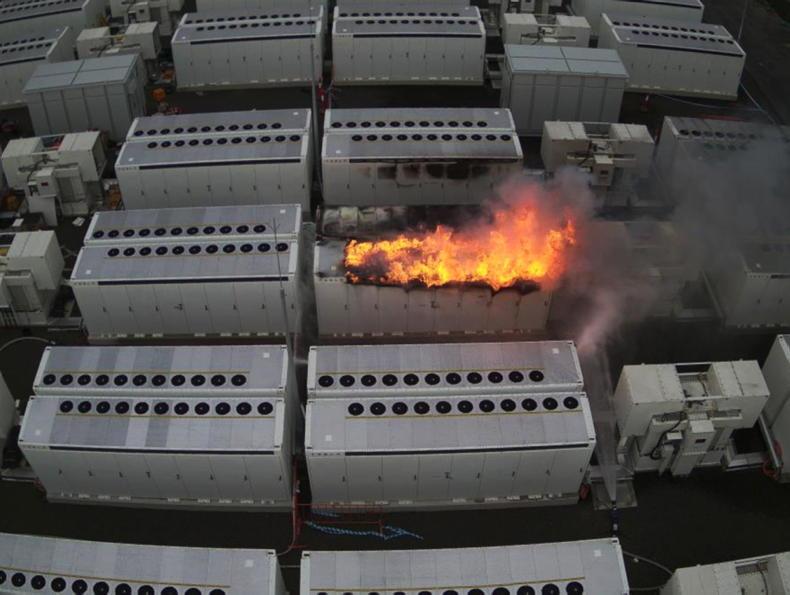
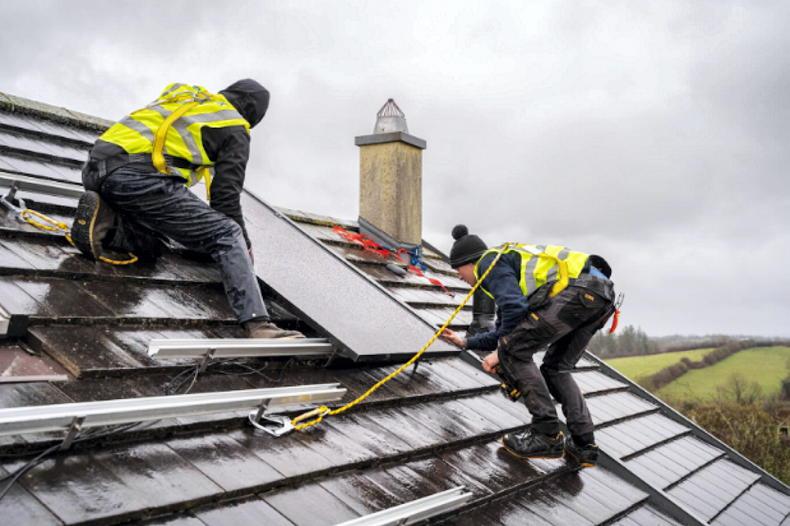

SHARING OPTIONS: